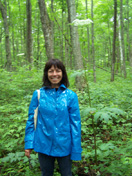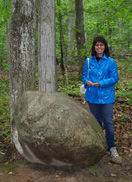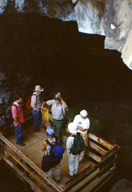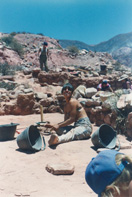[Overview of Current Research]
[To Become a Mountain Hunter] [Sacred Land Recovery]
[Kutoyis Archaeological Project] [Clark Forks]
[Montana Alberta Transmission Line]
[Native American Ornithology for the Missouri River]
[Lake Sakakawea Nomination]
[Knife River Ethnobotany]
[Michigan Treaty Rights]
[St. Croix River]
[69th Annual Plains Conference]
Overview of Current Research
Currently, I am working with the Blackfeet Tribe of Montana and with the Mandan, Hidatsa, and Arikara Nation of North Dakota in the development of research agendas that are dictated by tribal needs and concerns, and that are proactive in directing the future emphasis of knowledge gathering, preservation, and dissemination activities on- and off-reservations. Chief among the tribes' research concerns is the relationship among contemporary individual and ethnic identity, cultural practices, and land/resource use. Such collaborative research, which emphasizes archaeological and ethnographic fieldwork, has received 2006-2011 funding from the Indian Land Tenure Foundation, the National Park Service, the National Science Foundation, the US Forest Service, and the Bureau of Land Management, in addition to private companies.
Along the same hunting-gathering theme is my ongoing project with Odawa and Ojibwa tribes of Michigan, which entails the evaluation of traditional hunting, fishing, and trapping activities in ceded land and future projections under the 2007 Inland Consent Decree, which is opening up previously inaccessible national parks and other federal and state lands to tribal resource exploitation.
Following are brief descriptions of my ongoing and recently completed research projects. Full report citations and some pdfs are available on the publications page.
[top]
To Become A Mountain Hunter
Begun in 2008 during Dr. Zedeño's sabbatical, To Become a Mountain Hunter: The Archaeology and Ethnography of Blackfeet Treaty Rights was funded largely with grants co-written with and awarded to the Blackfeet Tribe. Ongoing archival research supports previous archaeological surveys and hunter use histories, completed by Zedeño and the Blackfeet Tribal Historic Preservation Office, respectively. An examination of previously unpublished government, state, and tribal records of hunting practices is essential to tracing the historical struggles of Blackfeet hunting families to modernize their ancient ways of life within culturally acceptable parameters.
The decade of the 1880s marks the end of bison hunting among Montana's Blackfeet population and the beginning of their life on an Indian reservation. Dr. Zedeño is conducting archival research needed to document how hunting practies remained crucial to helping this large, aggressive, and mobile indigenous group cope with devastating ecological and social change and survive in marginal confinement. The scenario of this historic adaptation is a tract of eastern Rocky Mountain piedmont, known as the "Ceded Strip" (Glacier National Park, Lewis and Clark National Forest, and Bob Marshall Wilderness), where the Blackfeet Tribe has exercised treaty rights for the past century and continues to do so.
Historians and ethnographers have documented myriad aspects of the complex and evolving Blackfeet culture and society vis-à-vis the nation-state. However, twentieth-century hunting has only been discussed in the context of the establishement of Glacier National Park, being otherwise dismissed as having little or no consequence in the Blackfeet's struggle to create a sustainable tribal economy. Scholars and published records remain largely silent about an activity that is both the fabric of individual and group identity, and a key to Blackfeet persistence as a people. Archaeological research, on the other hand, indicates that hunting is among the most assiduously exercised rights, involving a shift from communal open-prairie bison drives to intensive high-elevation hunting of ungulates (elk in particular). Additionally, use histories by Blackfeet hunters furnish a cultural context and indigenous view from which to interpret archaeological findings, for example, adjustments in hunting group size and composition, social networks, and ritual practices that Blackfeet hunters had to make to continue practicing the subsistence activity that defines their identity.
Beginning in 2004, a federal contract and two research grants awarded to the University of Arizona and to the Blackfeet Tribe, respectively, have allowed Dr. Zedeño and her students to conduct reconnaissance surveys and inventories of historic campsites and associated sacred sites and other culturally significant places and resources in the Badger-Two Medicine-Birch watersheds and the headwaters of the Flathead River. The goal was to identify and document Blackfeet elk hunting practices in ceded lands. This research demonstrated how high-elevation hunting has a measurable, consistent, and widespread archaeological signal that is the result of ubiquitous presence of at least six to eight generations of Blackfeet elk hunters in this area of the Rocky Mountains. These studies comprised five seasons of dedicated fieldwork and data analysis by Dr. Zedeño, her UA graduate student assistants Lauren Jelinek, Kacy Hollenback, and Wendi Field Murray, her office assistant Samrat Miller, and the Blackfeet Tribal Historic Preservation Office staff.
The results of this project will be incorporated into a book-length manuscript to be submitted for publication by May 2010.
[top]
Sacred Land Recovery
Since time immemorial, the Blackfeet people have strived to preserve their inalienable rights to the land given to them by the Creator. The Creation events, traditional culture, and history of the Blackfeet are inextricably linked to the land and its resources. In these gifted places, the people practiced their seasonal ceremonial and subsistence cycles, in the home of the original animals and other spirits. It was not until 1855 that the Blackfeet began to experience staggering loss of land and erosion of their freedom. One and-a-half centuries later, the Blackfeet continue to maintain physical and spiritual ties to ceded lands. These ties are critical to the preservation of national identity and ethnic pride, and to the education of their children. Thus, the tribe is actively seeking the means to preserve, enhance and, ideally, recover access to ancestral lands and resources for the use and enjoyment of the future generations.
The objectives of the Sacred Land Recovery Plan, which was made possible with a research grant from the Indian Land Tenure Foundation, are, first, to demonstrate, through field and archival research, that there is continuity in physical and spiritual ties between the Blackfeet people and selected parcels of ceded land currently managed by the federal government; and second, to employ the resulting information in the development of concrete and multiple-term plans for land recovery or exchange to be submitted for review by the US legislature. For the current funding period, four areas of interest were identified and prioritized for recovery: (1) Badger-Two Medicine-Birch Creek watersheds; (2) headwaters of the Middle Fork of the Flathead River; (3) Sweet Grass Hills; and (4) Sun-Teton River area.
[top]
Kutoyis Archaeological Project (KAP)
With National Science Foundation support, Dr. Zedeño and a team of colleagues and Blackfeet collaborators will conduct two seasons of archaeological fieldwork on the northwestern Plains. Together they will examine the relationships between social investment in communal bison hunting and organizational complexity among Late Prehistoric hunter communities who inhabited the foothills and prairies of the Montana-Alberta border between AD 1050 and 1660.
The centuries preceding the adoption of the horse by North American bison hunters were marked by important technological advances and demographic processes that visibly transformed the physical and social landscapes at various scales. Evidence of landscape engineering at the Late Prehistoric Kutoyis locality in north-central Montana will be explicitly targeted in order to evaluate large-scale bison harvesting and concomitant development of socal, political, and ritual structures and practices. The research team will conduct archaeological mapping of domestic and nondomestic structures, excavation of kill and processing features, and a host of paleoenvironmental and geophysical analyses to answer the following questions: (1) Did economic intensification shape the landscape at Kutoyis and how? (2) Is there any evidence of regulatory social action in the architecture of Kutoyis? (3) Was the Kutoyis landscape shaped by integrative mechanisms such as communal rituals? (4) Are the agencies and practices of individuals and groups visible in the material record of bison hunting at Kutoyis?
Kutoyis, also known as the Two Medicine Bison Jump Site, is located in the Blackfeet Indian Reservation, Glacier County, Montana. Kutoyis is a vast complex of rock features and bone scatters extending over 13 km2 on a plateau overlooking the Two Medicine River and in its floodplain. Remote and little known, this is nonetheless one of the largest and most significant Blackfeet heritage sites in the region. The completeness and intricacy of the drive line system, the multiple kill episodes, the existence of a corral/processing component, and the presence of two large campsites with initial evidence of architectural variability and one possible ritual component in close proximity to the kill site, make the Kutoyis locality a strong analytical case for investigating the articulation of social investment, landscape engineering, and material imprints of organizational complexity.
This study is relevant in many respects: first, it will provide the opportunity to evaluate and update deeply set models of sociopolitical organization that have characterized archaeological and anthropological approaches to big game hunters in general, and to northern Plains bison hunters in particular. Second, it will integrate diverse archaeological components and data sets, paleoecology, and ethnographic information into a multi-scale landscape approach to bison hunting. Finally, it will furnish a substantial amount of new information to augment current knowledge of northern Plains prehistory. As a collaborative endeavor with the Blackfeet Tribe, the research has great transformative potential: it will incorporate an underrepresented constituency into archaeological research, and will promote archaeological practice that is not only scientifically sound but cognizant and responsive to the traditional knowledge and practices of this constituency. This project will create multi-year research opportunities for undergraduate and graduate students, and a participatory model of archaeological investigation for them to follow.
The Kutoyis Archaeological Project is an ongoing collaborative heritage research project. Initial archaeological fieldwork was funded with a 2007 National Park Service Heritage Grant cowritten by Dr. Zedeño and awarded to the Blackfeet Tribe. A two-week field season for preliminary systematic survey and testing of the complex was conducted in summer 2007 under the direction of Dr. Zedeño. She had the assistance of three UA doctoral students: William Reitze (field director, geoarchaeology), Jesse Ballenger (bone excavation and analysis), and Nicholas Laluk (survey); and three Blackfeet crew members. Archival research and analysis, including soil sampling at the University of Arizona Geoarchaeology Lab and x-ray fluorescence analysis at the Berkeley Archaeological XRF Lab, continued in the fall. This research showcases minimally invasive analytical approaches to heritage management.
In 2008, Dr. Zedeño and graduate student William T. Reitze organized a poster symposium to present their findings at the Society for American Archaeology Annual Meeting in Vancouver. Dr. Zedeño, along with several graduate students and tribal members, showed five posters detailing their findings in the 2007 field season. The Blackfeet Tribe wishes to have the site investigated and interpreted as the anchor for a future heritage and research center.
With the support of the National Science Foundation grant and a second National Park Service Heritage Grant, archaeological fieldwork resumed in July 2009. The next field season is planned for summer 2010.
[top]
Clarks Fork
In June 2009, Dr. Zedeño visited Wyoming with three Blackfoot elders and John Murray, Blackfeet Tribal Historic Preservation Officer, for the Clarks Fork River Canyon (WY) Ethnographic Study. The Bureau of Land Management has tasked her with an assessment of archaeological sites (including stone circles, cairns, and trails in the study area) from the Blackfoot perspective, to provide information on traditional uses and associations, and to suggest recommendations for future management or preservation of these cultural resources.
The study is designed to integrate both existing archaeological information with other traditional knowledge sources to provide the Bureau of Land Management with the information they need for planning.
[top]
Montana Alberta Transmission Line
In 2007, Dr. Zedeño received a contract from Montana Alberta Tie, Ltd. to document traditional land uses, assess current traditional knowledge, and provide an appraisal of Blackfeet cultural resources found along the Montana Alberta Tie, Ltd. Proposed Transmission Line, a 214-mile electric power transmission line between Lethbridge, Alberta, and Great Falls, Montana. This project entailed site visits with elders from the Blackfoot Confederacy (representing the North Peigan, Kainai Nation, and Siksika Nation of Alberta, Canada, and the Blackfeet Nation of Montana) and collaboration with several graduate students in compiling the final report, published in January 2008.
[top]
Native American Ornithology for the Missouri River
In May 2009, the National Park Service commissioned the University of Arizona to conduct a regional ethnographic study of bird resources in three national park units in North Dakota. They seeks to identify the contemporary significance of birds and bird-related resources located in the Missouri River environs, in fulfillment of the parks' obligation to document ethnographic resources that fall under their management jurisdiction. This study will complement previous resource-specific studies conducted for North Dakota parks, and will contribute to the development or modification of management policies.
The objective of this project is to develop a Native American Ornithology in order to document ecological and cultural knowledge of a unique resource within North Dakota parks and monuments, and to provide a management tool for park personnel that informs effective and culturally appropriate bird management strategies. In addition, this project will furnish information on Native American ecological knowledge that may in turn be incorporated in park exhibits and interpretive signs and brochures.
The project methodology has two phases: Phase I will entail an extensive review of ethnographic literature to extract a list of culturally significant birds and their place in Native American society and culture. This list will be cross-referenced with bird lists from Theodore Roosevelt National Park, Knife River Indian Villages National Historic Site, and Fort Union Trading Post National Historic Site. Phase II, beginning in June 2010, will involve interviews with members of regional tribes that have a long history of association with the Missouri River drainage and North Dakota parks, and that continue to live by or use river resources regularly. Participant tribes, so far, include the Mandan, Hidatsa, and Arikara Nation, Blackfeet Nation, Apsáalooke Nation (Crow Tribe), and Fort Belknap Indian Community (Gros Ventre and Assiniboine Tribes). As birdwatching is time-consuming, unpredictable, and costly, we will use visual aids (bird field guides) and visits to the State Historical Society of North Dakota museum, where there is a permanent exhibit of a large number of mounted birds from the Missouri River environs. We will also visit the Missouri River at the point where the participant tribes are located to encourage conversations about the river landscape and ecology and to situate information about birds otherwise collected with visual aids.
This study is particularly relevant today, as natural and cultural resource managers in national parks increasingly strive to develop management plans that accommodate the cultural needs of traditionally associated communities. This study will ensure that park management strategies are commensurate with the resource needs of the community.
[top]
Lake Sakakawea Nomination
Graduate student Wendi Field Murray, under the supervision of Dr. Zedeño and in collaboration with Calvin Grinnell and the Mandan, Hidatsa, and Arikara Nation, is conducting a survey of existing information on Lake Sakakawea in North Dakota in preparation for a Traditional Cultural District Nomination to the National Register of Historic Places.
Lake Sakakawea was created with the 1956 completion of Garrison Dam, which flooded several towns on the Fort Berthold Indian Reservation and dislocated most of the families on the reservation who lived along the Missouri River.
[top]
Knife River Ethnobotany
When the bottomlands of the Upper Missouri River were flooded in the 1950s, many plant species traditionally used by village tribes were lost. Remnants of bottomlands and native prairies have been preserved in the Knife River Indian Villages National Historic Site, which contains vital cultural resources of culturally affiliated tribes. A collaboration between the Cultural Preservation Office of the Mandan, Hidatsa, and Arikara Nation, National Park Service, and Bureau of Applied Research in Anthropology, this project aims to 1) integrate published and unpublished historical materials with contemporary literature and ethnography, in order to construct a comprehensive ethnobotany for the tribe, and 2) incorporate contemporary indigenous knowledge and perspectives about riparian and native prairie vegetation into the park's resource management strategies.
Consultation-based research with the Mandan, Hidatsa, and Arikara Nation and the Apsáalooke Nation (Crow Tribe), among other tribes, began in 2004, when the National Park Service sponsored an ethnographic overview and cultural affiliation study for North Dakota parks. From these and subsequent projects grew the idea for a collaborative project in which the two tribes, Park Service officials, and academic researchers would develop a comprehensive ethnobotanical field guide for the Knife River region. Fieldwork was conducted in the summers of 2007 and 2008 in the Knife River Villages National Historic Site, the neighboring Cross Ranch State Park, and on the Fort Berthold Indian Reservation. Archival reviews were undertaken throughout this period.
Over the course of the study, Dr. Zedeño, with the aid of graduate students Wendi Field Murray and Kacy Hollenback and research assistant Samrat Miller, recorded a total of 120 plants. Fourteen tribal consultants were interviewed and over 20 native plant names were added to those recorded in published and unpublished sources. Traditional and contemporary uses, including medicinal, ritual, and utilitarian aspects of the plants were discussed at length by the elders. Consultants also shared origin stories and plant associations with the seasonal ceremonial cycle.
In 2008, Dr. Zedeño's students, along with Mandan/Hidatsa historian Calvin Grinnell, presented their findings in a poster entitled Ethnobotany along the Missouri River Trench and Environs: A Collaborative Research Project at the Plains Anthropological Conference in Laramie, Wyoming. The draft report, a plant field guide that combines scientific and native knowledge, language, and significance, was submitted to the National Park Service in 2009 and is currently in search of a publisher.
[top]
Michigan Treaty Rights
In 2008, Dr. Zedeño was awarded a National Park Service grant to create evaluation instruments and provide a substantive assessment of national park uses by members of Odawa and Ojibwa tribes who reserve rights to hunt, fish, and collect rice & other natural resources under treaties signed with the United States. Specifically, she will be conducting interviews with members of the Little River Band of Ottawa Indians, Grand Traverse Band of Ottawa and Chippewa Indians, and Little Traverse Bay Bands of Odawa Indians at Sleeping Bear Dunes National Lakeshore in Michigan.
This research complements previous collaboration between the Bureau of Applied Research in Anthropology and the tribes. In 1996, the National Park Service's Midwest Regional Office commissioned BARA to conduct a regional ethnographic overview and assessment of Ojibwa resources in four national park units in Michigan, Wisconsin, and Minnesota. That study provided an overview of land use history and field identification of a broad range of resources (e.g., plants, animals, minerals, water, landforms). The objective was to develop a sense of the cultural landscape of the Great Lakes Ojibwa people and to ascertain their current concerns and interest in collaborating with the National Park Service in the identification, management, and preservation of culturally significant places, resources, and landscapes.
In light of the 2007 Inland Consent Decree, which reaffirms the Ojibwa and Odawa's hunting, trapping, and inland fishing rights as guaranteed by the 1836 Treaty of Washington, the National Park Service seeks to expand upon this research. The current project (2009-2010) aims to bring Sleeping Bear Dunes National Lakeshore's management plan into compliance with the 2007 Inland Consent Decree by documenting tribal uses of natural resources within Odawa and Ojibwa traditional lands.
Dr. Zedeño, aided by graduate student Kacy Hollenback and research assistant Samrat Miller, will seek information on the history of traditional hunting, fishing, and trapping practices and rights, as well as on contemporary practices, concerns, and recommendations for facilitating and improving collaborative management of resources through archival research (ongoing) and site visits with tribal members (begun in June 2009).
[top]
St. Croix River
Dr. Zedeño's collaboration with the Ojibwa community began in the late 1990s with the St. Croix River study, which resulted in several publications, including:
2001 Ojibway Traditional Resource Use in the Western Great Lakes (with R. W. Stoffle, F. Pittaluga, G. Dewey-Hefley, M. Porter, and R. C. Basaldú). Prepared for the National Park Service, Midwest Region. Bureau of Applied Research in Anthropology, University of Arizona, Tucson.
2001 Ethnographic Overview and Assessment for the St. Croix River National Scenic Riverway (with R. C. Basaldú, K. Hamm, and A. Eisenberg). Prepared for the National Park Service, Midwest Region. Bureau of Applied Research in Anthropology, University of Arizona, Tucson.
2003 Tracking the Role of Pathways in the Evolution of a Human Landscape: the St. Croix Riverway in Ethnohistorical Perspective (with R. W. Stoffle). In Colonization of Unfamiliar Landscapes: The Archaeology of Human Adaptation, edited by M. Rockman and J. Steele, pp. 59-80. Routledge, London.
2005 St. Croix River National Scenic Riverway - A Companion to the National Park Service Ethnographic Resource Inventory (with A. K. Carroll and V. Fletcher). Bureau of Applied Research in Anthropology, University of Arizona, Tucson.
2006 St. Croix River National Scenic Riverway: A Companion to the Ethnographic Resource Inventory (second author with J. Smith). M. N. Zedeño, principal investigator. V. Fletcher and E. Cutright-Smith, comps. and eds. Bureau of Applied Research in Anthropology, University of Arizona, Tucson.
2006 The Lower Tamarack River Village Site, St. Croix National Scenic Riverway, Minnesota: An Overview of its History and Ethnography, and an Evaluation of Contemporary Significance for Culturally Affiliated Tribes (with N. C. Laluk). Bureau of Applied Research in Anthropology, University of Arizona, Tucson.
2008 Traditional Knowledge, Ritual Behavior, and Contemporary Interpretations of the Archaeological Record – an Ojibwa Perspective. In Belief in the Past: Theoretical Approaches to the Archaeology of Religion, edited by D. S. Whitley and K. Hays-Gilpin, pp. 259-274. Left Coast Press, Walnut Creek, California.
2008 When Is a Site Culturally Viable? (with N. C. Laluk) Heritage Management 1(1):71-98.
[top]
69th Annual Plains Conference
Graduate
[top]


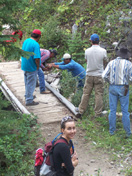



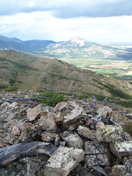






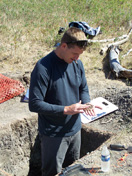




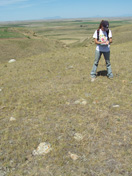
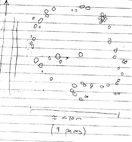
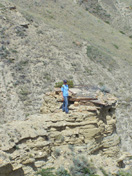


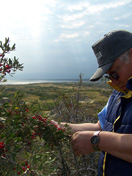


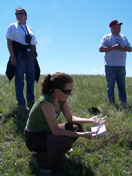

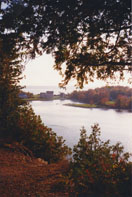
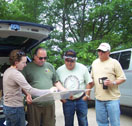

![Kacy Hollenback and Samrat Miller flank a man who is blood kin to the grizzly bear that bit Lewis & Clark on their [bottoms]](images/billy_thumb.jpg)



